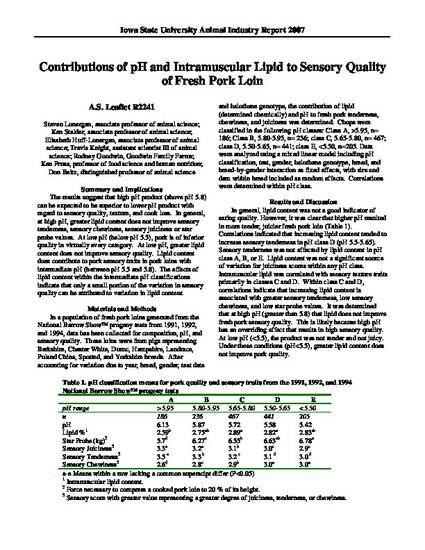
The results suggest that high pH product (above pH 5.8) can be expected to be superior to lower pH product with regard to sensory quality, texture, and cook loss. In general, at high pH, greater lipid content does not improve sensory tenderness, sensory chewiness, sensory juiciness or star probe values. At low pH (below pH 5.5), pork is of inferior quality in virtually every category. At low pH, greater lipid content does not improve sensory quality. Lipid content does contribute to pork sensory traits in pork loins with intermediate pH (between pH 5.5 and 5.8). The effects of lipid content within the intermediate pH classifications indicate that only a small portion of the variation in sensory quality can be attributed to variation in lipid content.
Available at: http://works.bepress.com/kenneth_stalder/58/
